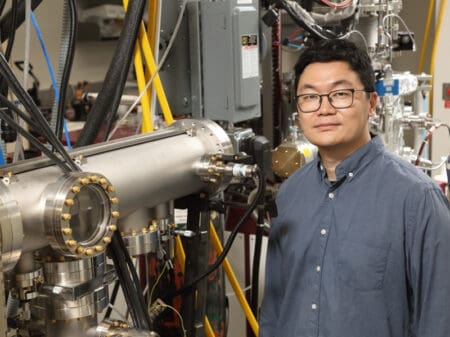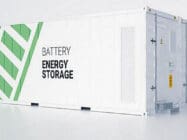
Innovative water leak detection techniques, Li-ion batteries with anti-freeze electrolyte and next gen optoelectronics under investigation are on this week’s technology radar.
Novel water leak detection
By 2030 Britain’s water industry is required to reduce leakage by 1 billion l/day to ensure future water supplies, which in turn requires a step change in innovation in current leak detection tools.
Two new projects are set to tackle this issue with funding from Britain’s water regulator Ofwat’s innovation ‘Water Breakthrough Challenge’ fund.
Severn Trent Water is leading an initiative to use fibre optic cables adjacent to water mains as leak sensors. While the concept, which uses unused optical fibre strands, aka ‘dark fibre’, has already been demonstrated, the next phase is focussed on proving it at scale as well as building industry confidence to bring the technology to market.
Have you read?
Hydro powered smart water meter to be developed
How light could boost performance of fuel cells and lithium-ion batteries
SES Water is investigating a complementarity approach, with what it has named a ‘universal access point for water’. Part of tackling leakage is an accurate understanding of the condition of the water mains and the ability to carry out inspections and repairs without the need for expensive and disruptive excavations. The project is aimed to design such a universal access point with a standardised entry for use for inserting cameras, leak location arrays, repair solutions, autonomous robotic solutions or a host of other devices.
“We’re really excited to be developing the universal access point, which will enable water companies to reduce water leakage and manage their current buried asset base far more effectively,” says Jeremy Heath, Innovation Manager at SES Water.
An EV battery for all seasons
As electric vehicles (EVs) have become more widespread drivers have increasingly observed a drop in performance in the winter, as have other users of electronic devices with lithium-ion batteries such as cameras.
The issue is attributable to the electrolyte starting to freeze in sub-zero temperatures. But this may soon be a thing of the past with the development by a team of scientists from the US Department of Energy’s Argonne and Lawrence Berkeley national laboratories of what is effectively an anti-freeze electrolyte with fluorine.
In testing with laboratory cells, the team’s fluorinated electrolyte retained stable energy storage capacity for 400 charge-discharge cycles at -20oC. Even at that sub-zero temperature, the capacity was equivalent to that of a cell with a conventional carbonate-based electrolyte at room temperature.
The team also determined at the atomic scale why their electrolyte composition worked so well, depending on the position of the fluorine atoms within the molecules in the electrolyte transporting lithium ions and the number of those atoms.
The researchers anticipate that the anti-freeze electrolyte shows promise of working not only for batteries in EVs, but also in energy storage for electric grids as well as for consumer electronic devices.
Next-gen optoelectronics in prospect
Optoelectronic devices – that convert light into energy – are widely used in applications from solar PV panels to TV screens and smartphone displays.
These rely on semiconductor materials to operate but expanding the current capabilities of optoelectronics with improved performance and new functionalities lies in finding new non-silicon semiconductors.
Kyusang Lee, an assistant professor of electrical and computer engineering and materials science and engineering at the University of Virginia School of Engineering and Applied Science, has been investigating such new systems with a ‘mixed-dimensional heterostructure’ approach involving the joining together of 2D and 3D semiconductor materials.
A material system engineered this way has the potential to efficiently detect a wide range of frequencies on the electromagnetic spectrum, including ultraviolet, visible and infrared light. But before tapping that potential, more understanding is needed on the optical and electronic properties of the heterostructure, specifically how electrical charges and energy move across the 2D-3D junction through a ‘hybrid charge transfer exciton’.
Now with funding from the US Air Force, Lee aims to describe the quantum (atomic level) physics of his proposed heterojunctions. Then mixed-dimensional heterostructures would be fabricated to validate the model predictions.
Eventually, the aim is to enable the learnings to be applied to design a wide array of optoelectronic sensing technologies.
While the technology is clearly of potential interest for military applications, another potential one could be to improve the efficiency of PV panels to operate in non-sunny conditions and possibly even at night.








